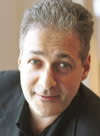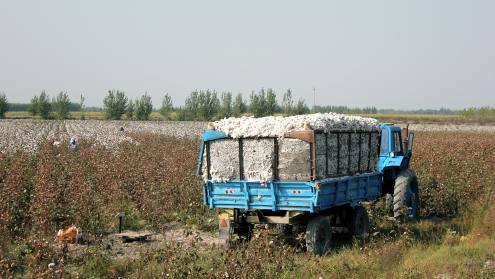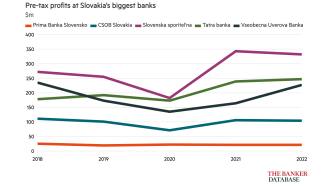Ratings agency Standard and Poor’s (S&P) surprised investors by upgrading Russia’s credit rating at the end of January to one notch below the sought-after investment grade. The country’s rating has been increased seven or eight times since the 1998 financial crisis, when it earned a “selective default” label – the lowest rung on the ladder. The market is expecting the agencies to hike the ratings the last notch sometime after the presidential elections in March and so to open the door to a whole new class of capital. But analysts still cannot agree if Russia is ready to receive this badge of respectability.
Bond traders, however, have already made up their minds and Russian fixed income instruments have been priced as if the country had been investment grade since last year: Russian Eurobonds enjoy tighter spreads over US treasuries than Mexico, which was awarded an investment grade several years ago.
With US interest rates at less than 1% and US treasury bills – the international benchmark of sovereign debt – at their lowest level for a generation, bond investors are faced with the headache of hunting for yield, almost irrespective of risk. Russian bonds are every trader’s dream, offering an enticing tonic of high yields married with rapidly (and predictably) decreasing risk.
Moody’s up front
Moody’s led the charge when last October it unexpectedly gave Russia’s long-term foreign currency bonds a two notch mark-up to Baa3. The Russian stock and bond markets soared on the news: stocks shot up by more than 10% and spreads on Russia’s Eurobonds against the US treasury benchmark tightened by 1%.
But the decision was contentious. Although nearly every economic indicator had been moving rapidly from bad to good, some analysts pointed out that there were still significant political and economic risks. Christof Ruehl, the World Bank’s chief Russian economist, warned at the time: “Moody’s has upgraded Russia to reflect where it is going, not where it is.”
S&P and Fitch both held back, saying they needed to see more evidence of structural reform before Russia could qualify for its investment grade medal. Embarrassingly for Moody’s, only two weeks later the major shareholder in the Yukos oil company and corporate governance poster boy, Mikhail Khodorkovsky, was arrested in a dawn raid, sending the stock market plummeting and causing concern that reforms might be reversed.

Dmitry Dmitriev: Russia should have had a credit rating upgrade a year ago ‘Russia’s external debt has fallen from about 100% of GDP to less than 30% and the Central Bank of Russia hard currency reserves are equivalent to more than 80% of this debt’
Is Russia ready?
Did Moody’s jump the gun? Of the three main agencies, it bases assessments on the narrowest range of criteria – mostly macroeconomic performance – and from this perspective Russia is shining.
Hard currency reserves have climbed to an historic $80bn-plus. Although small in comparison with the European average of $252bn, Russian reserves are enough to pay for 13 months of imports, second only to Japan’s 19 months and well ahead of western Europe’s average of three months.
President Vladimir Putin’s comprehensive and radical tax reform is paying dividends, launched a month after he took office in May 2000 with a flat rate income tax of 13%. The government finished 2003 with a whopping 5.3% budget surplus, against the 7%-8% deficit that the Yeltsin administration used to run.
Likewise, the economy finished 2003 with a surprise 7.3% year-on-year GDP growth, well ahead of the government’s modest 4.3% target at the start of 2003, while inflation hit the government target of 12% against analysts’ predictions. And Russia became a net importer of capital last year for the first time since the collapse of the Soviet Union.
“From a credit point of view Russia should have been upgraded a year ago,” says Dmitry Dmitriev, fixed income and bank analyst at Brunswick UBS Warburg. “Russia’s external debt has fallen from about 100% of GDP to less than 30% and the Central Bank of Russia hard currency reserves are equivalent to more than 80% of this debt.”
The triumvirate of the ministry of finance, the Central Bank of Russia (CBR) and the economic development and trade ministry have already proven that they are prudent and effective economic managers, encouraging confidence that the government will hit its targets again this year and improve Russia’s economic health even further.
From an equity market perspective, Russia also looks eligible for the upgrade; other emerging markets have typically earned an upgrade after the capitalisation of their stock markets has doubled in size from its low point. Since the 1998 crisis, Russia’s leading RTS (stock exchange) indicator has risen from a low of 38.5 on October 5, 1998 to a record high of 573.85 on October 9, 2003, a 10-fold increase or 1490% rise. Even marking the rise against the RTS’s previous low of 67.3 on March 19, 1996, the market is still up eight-fold and this year has already passed the psychologically important 600 mark.

Eric Kraus: too many grey areas for a full investment-grade rating ‘Russia does not yet share the external attributes of the average investment-grade country: sanctity of contract, smooth alternation of political power ... It is very much an ongoing restructuring story’
Scepticism remains
There are detractors of the Russian story. According to Eric Kraus, chief strategist at Russian brokerage Sovlink, Russia may have been upgraded by one agency but there are too many grey areas for it to be considered a full investment-grade rating. “On the one hand, from the macroeconomic viewpoint, it is above-investment-grade: the near/medium-term sovereign default risk is essentially zero. On the other hand, Russia does not yet share the external attributes of the average investment-grade country: sanctity of contract, smooth alternation of political power, moderate growth, lack of reform gridlock, etc. It is very much an ongoing restructuring story,” he says.
Similarly, Fitch and S&P have both urged investors into Russia to be cautious. They admit that the macroeconomic story is a convincing one but point to the slow pace of change to things like the banking infrastructure and the judiciary. Russia will always be vulnerable to crises until these crumbling pillars of the market are reinforced, they believe.
Since taking over the presidency, Mr Putin has been diligently pushing a liberal agenda but his record of success has been patchy. As a result of Mr Khodorkovsky’s arrest, Russia watchers wonder if Mr Putin will be able to stick to this agenda because it strengthened the hand of the hard line faction in the Kremlin. And, despite the strong economic results, economists are still unsure about how vulnerable Russia is to, say, a sharp downturn in international oil prices.
Vote of confidence
S&P gave Russia another vote of confidence in the final days of January by hiking Russia’s sovereign credit rating to BB+ with stable outlook, one notch on its scale below investment grade. “The upgrade reflects continued rapid improvement in external liquidity and government debt levels,” said S&P’s credit analyst Helena Hessel in a report.
Still, Ms Hessel surprised markets by stating that the agency was unlikely to raise the rating to investment grade in 2004 because of structural shortcomings that could only be fixed over the medium term. She said that, while economically Russia’s performance is good, politically it falls short of what an investment-grade country should be – pointing to the poor rule of law, corporate governance and corrupt administrative institutions.
Fitch has been more upbeat and says that Russia stands a good chance of an upgrade this year. But both S&P and Fitch have voiced reservations about the pace of structural reform, and the fallout from the Yukos affair in particular. S&P was especially concerned that capital flight would pick up dramatically after Mr Khodorkovsky’s arrest, as oligarchs scrambled to whisk their cash offshore.
However, these fears seem to have been unfounded. The latest government estimates of capital flight revealed positive inflows of $2.6bn in the final quarter of 2003 compared with $8.6bn outflows in third quarter.
Russian analysts are more optimistic. Some believe that the Yukos affair will lead to faster and more far-reaching structural reform. They argue that the oligarchs were attempting to “privatise” the government by buying votes to steer government policy in their direction. Reforms to oil taxes and the banking sector were bogged down as the powerful financial-industrial groups obstructed liberal reforms that would hurt their businesses.
Since the Yukos affair, business has noticeably backed away from government interference and the leading companies have rushed to prove their allegiance to the Kremlin. For example, in the past two months several top oil companies have offered to abandon the use of all tax exemptions – even legal ones – for no apparent reason.
Making the grade
Companies, naturally, would welcome investment grade status. Pavel Mamay a bank analyst at Renaissance Capital, estimates that each upgrade notch knocks 25-60 basis points (bp) off yields; economists say that the upgrade will save Russian companies about $2.5m a year in interest payments. Moody’s upgrade has already translated into tens of million of dollars of savings in the cost of borrowing for Russia’s blue chip issuers. For example, Magnitogorsk Metal Works (MMK) and cellular operator Mobile TeleSystems (MTS) both placed bonds more cheaply than they were expecting. MMK had 25bp shaved off its yields and placed its three-year bonds at a modest 8.25%. MTS enjoyed the same saving and placed its eurobonds at 8.375%.
Neither Fitch nor S&P are insisting on the completion of structural reforms; they just want to see solid evidence that the reforms will happen. And, if Mr Putin does follow through with a vigorous reform agenda once the presidential elections have passed, then the upgrade is likely.











